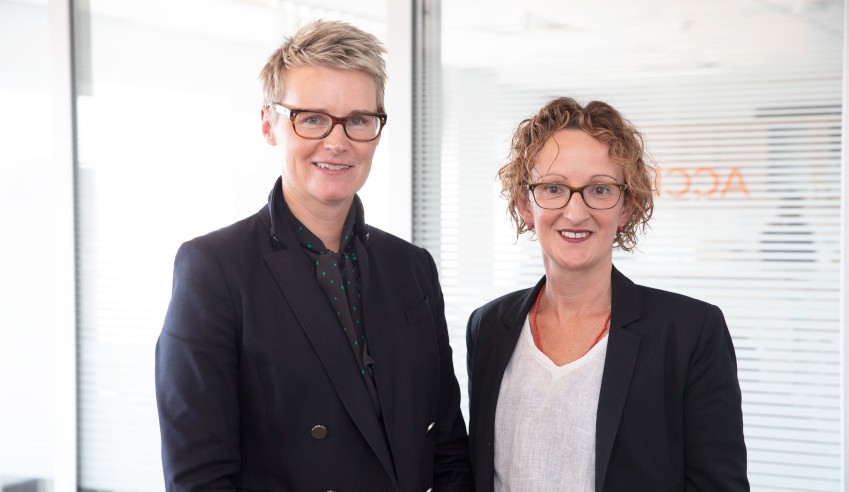In this second half of Lawyers Weekly’s conversation about the role of firm leaders in advocating for wellness, Melinda Upton and Mary Digiglio discuss walking the talk, the need for holistic approaches, catering to the needs of juniors and factoring in the client perspective.

There is a challenge, or risk, of being inauthentic with wellness advocacy if such a focus is not properly integrated into the business, thereby potentially creating a scenario in which more damage is done, DLA Piper Australia co-managing partner Melinda Upton said.
“It’s not always easy, because if you think of the environment we’re in, we are regularly engaged by our clients to advise on very strategic issues with transactions and litigation in an increasingly demanding environment around regulatory and governance issues, and your clients are engaging you for your intellectual capital.”
Swaab Attorneys managing partner Mary Digiglio agreed, saying that if leaders aren’t walking the talk, it can have a significant impact upon the culture of the firm.
“I’d say 90 per cent of [graduates applying for roles at our firm] are asking us what does the firm do in the wellness space, or they say, ‘We notice that the firm is heavily involved in the wellness space, can you tell us what else you’re doing’,” she recounted.
“It is an expectation now, as it should be, that the firm is responsible in this area and that it is first and foremost in the mind of the leaders and managers when making any decisions.”
“I think the danger is if leaders are not on the bus, people will notice. It might not have an impact immediately, but over time, people will realise that the authenticity is not there, and it will have a negative cultural impact,” Ms Digiglio warned.
Ms Upton added that such an impression can and does see people leaving the profession.
“[Our duty is to ensure] there is an environment where you can discuss these issues, breaking down the stigma, so you may be able to intervene or provide assistance that can support a person during the course of whatever he or she is dealing with at that point in time,” she noted.
Further, when considering client needs, there is an opportunity to ensure a whole-of-office approach is taken, which not only accommodates wellness imperatives but also addresses what clients want.
“Things like investment in technology and innovation – which clients don’t just want to see but actually demand – and doing business differently and prioritising the mobility of our people are all things that contribute to a much better environment,” Ms Upton explained.
“One thing we must do, therefore, is increase dialogue with our clients, to harness the power of the business and ensure it’s a collective effort, [otherwise] we will not be successful in terms of how we are motivated and what we’re looking to shift.”
And when it comes to implementing such shifts, Ms Digiglio reflected that she has learned a lot from some of the most junior people in her firm, which she said is a “beautiful thing”.
“The future of firms is the younger, more junior people, so I say listen, consider and have the courage to implement what those people say,” she argued.
“Some of the most powerful stuff that I’ve done in the firm hasn’t been things that I’ve considered appropriate, but ideas that have come from junior people.”
You can read Part One of this discussion here. Pictured below is Melinda Upton (left) and Mary Digiglio.


Jerome Doraisamy is the managing editor of Lawyers Weekly and HR Leader. He is also the author of The Wellness Doctrines book series, an admitted solicitor in New South Wales, and a board director of the Minds Count Foundation.
You can email Jerome at: